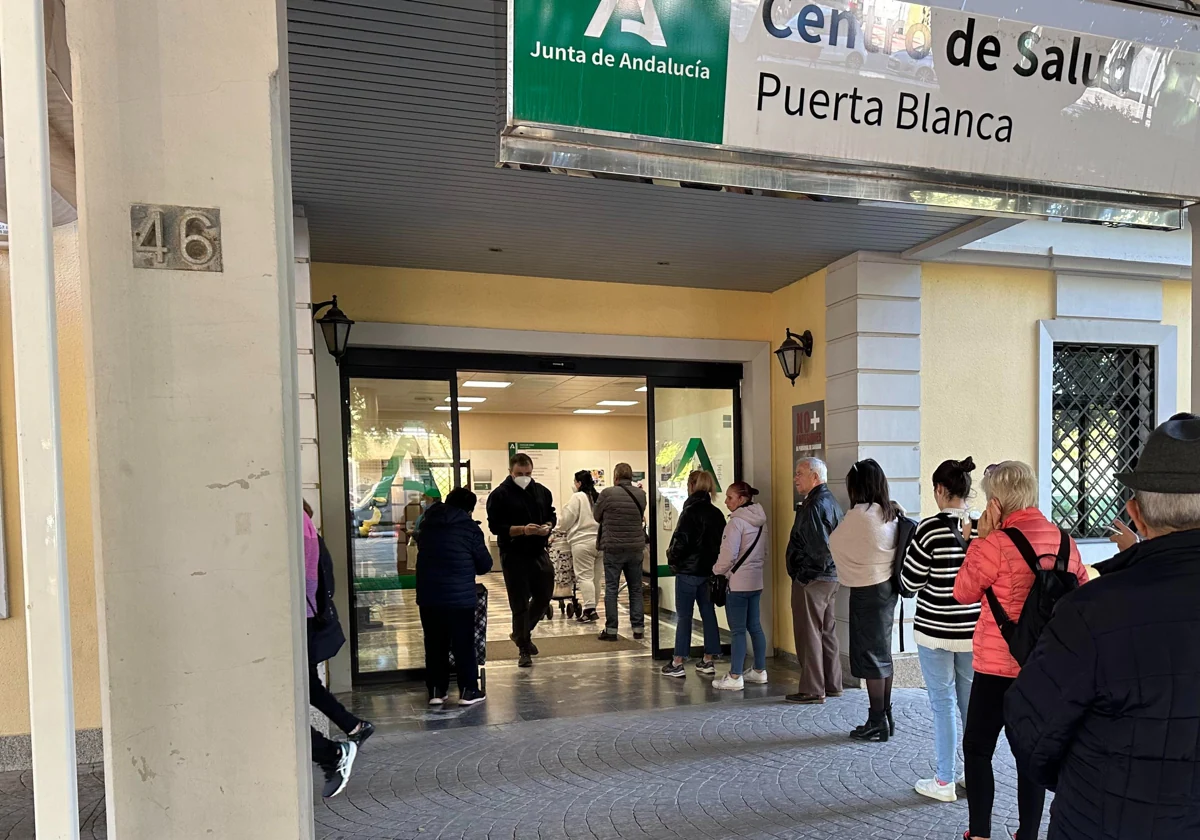After several difficult weeks in Málaga and Andalusia due to influenza and other respiratory illnesses, the province and the rest of the region have passed the peak and are on a clear downward trend. The announcement was made this Friday by SAS General Manager Valle García after meeting in Malaga this Friday with members of the High Frequency Meeting of Regional Hospitals; Regional Health and Consumer Affairs Representative Carlos Bautista and SAS Hospital Management Deputy Director María José Ferrer also participated in the meeting.
According to data provided by the head of the Ministry of Health, a total of 34,574 hospital emergency cases were reported in Andalusia in the first three days of this week, a “slight decrease” compared with the same period last week. Among them, the number of registered people is 35,055. Some 700 more emergencies are dealt with on these days than the average daily emergency for the year, a fact that SAS considers “normal” during peak traffic times. Seville and Malaga are the provinces with the highest concentration of emergencies, with 8,086 and 6,125 cases respectively.
In terms of hospitalizations, the total number of hospitalizations in Andalucia during these three days dropped to 2,715 from 2,972 the previous week, a decrease of 8%. In terms of emergencies, Seville and Malaga top the list with 655 and 499 hospital admissions respectively. “While these figures continue to be higher than the average daily earnings observed throughout the year, a downward trend in this metric is also evident,” SAS highlighted.
Another relevant indicator associated with influenza peaks is the indicator corresponding to emergency care provided in primary care centres. In fact, on the worst days, such as after Epiphany, long queues can be seen in many places. It can be seen from the information disclosed on Friday that a total of 144,351 emergencies were handled last week (January 17 to 24), which was the same as the previous week. Of the 34 primary care districts, only the Serranía district is in phase 3 (an increase in emergency care of more than 35%), while the other 33 districts are in phase 0, with an increase in basic activities of less than 15%.
The ministry recalled that last winter, between December and February, Andalusian hospitals dealt with more than 1.1 million emergencies, of which only 7.6% required hospitalization. Thus, during the high attendance period of the season (from October 15 to the present), 1,094,000 people have been treated by the Andalucía Hospital Emergency Service, of which 7.6% required hospitalization. As a result, the number of hospital admissions was “very similar” to last year, and the proportion of emergency admissions to the total number of emergency admissions was also similar to this time in previous years.
Decreased incidence
According to the latest information, data for week 3 show that the incidence rate of acute respiratory infections in Andalusia is 461 cases per 100,000 inhabitants, which represents a significant decrease compared to the previous week (621.9). Nationally, the rate was 717.3 per 100,000 inhabitants, also lower than the previous week (933.2).
Regarding this set of data, the general manager of SAS insists on sending a message of “calmness” to the population, since in her opinion the health centers and their professionals are ready to meet any increase in demand. “All patients are treated in the shortest possible time, healthcare is safeguarded and the entire system is prepared to deal with any increase in demand. The current situation is not much different from what was recorded in previous years before the Covid-19 pandemic, “He said.
Still, Garcia stressed the need for “caution” to see how the data develops in the coming days and called for vaccinations to continue. Anyone at risk who comes to a primary care vaccination site will continue to receive the flu, Covid-19 and respiratory syncytial virus (RSV) vaccine next week until the end of the campaign.
These groups include people with influenza and COVID-19, people over 60 years old, people with chronic diseases, health and social hygiene workers, pregnant women, security forces and legions, cohabitants of high-risk groups, and smokers. Additionally, it is important to remember that children aged 6 to 59 months receive the childhood flu vaccine.

